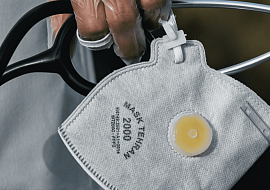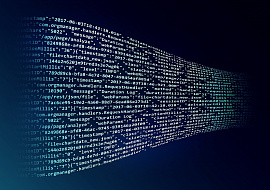How Leveraging Enterprise IoT Services Allows to Mitigate Data Integration Challenges
The Internet of Things has had a significant impact on the field of data integration, leading to extensive research and widespread recognition within the IT community. First, this is because data integration is a necessary stage in building an IoT ecosystem. Second, the ultimate goal of data integration aligns with implementing enterprise IoT solutions for businesses, combine multiple data sources to reap various benefits. Despite extensive global research on this topic, the complexity and diversity of devices and protocols in the IoT ecosystem continue to expand, keeping the issue highly relevant.
If you want to utilize IoT to address your business concerns, you will inevitably encounter issues associated with data integration. The more diverse your enterprise landscape is, the more data-related issues you'll likely have to address. Is it possible to be prepared for this? Enterprise IoT services provide a comprehensive approach to integrating enterprise data. It's important not to underestimate the significance of this step in your Enterprise IoT project. In this article, PSA gives you an overview of data integration in the IoT ecosystem. It also provides tips on how to prepare for data integration and minimize risks.
What is Data Integration within Enterprise IoT Services? Why is it Challenging?
Data integration is the process of combining different types of data to make it suitable for further enterprise use, according to business goals. This is what you definitely need for an Enterprise IoT solution to work successfully. In a sense, IoT applications exist because data integration is possible. Ironically, it frequently becomes №1 challenge when implementing Enterprise IoT solutions.
In view of the foregoing, when speaking about data integration, we speak about the urgency of the following aspects:
-
Security. Multiple access points can bring additional vulnerability to the EIoT system
-
Homogeneity. Data from multiple sources is collected in different formats, which is not initially suitable for analysis
-
Compatibility. Various types of data require various communication protocols
-
Quality. IoT devices may generate a large amount of noisy data
As you can see, the concept of plurality runs like a red thread through each point. Thus, the larger your enterprise is and the more assets you plan to connect to the IoT ecosystem, the more likely you will encounter obstacles during data integration. The goal of applying enterprise IoT services is to achieve seamless multi-channel data acquisition, processing, and analysis that meets business expectations. To maximize the potential of the collected data, it is important to ensure its full realization.
By prioritizing data integration and recognizing its full potential, businesses can unlock benefits like real-time asset monitoring, improved operational efficiency, 24/7 availability, and data-driven decision-making. Often, if you generate and are going to process an enormous amount of data, it may need a separate group of specialists to set up data flows correctly around the enterprise.
Enterprise IoT Services Help Define the Optimal Data Integration Approach
After a profound research into your business landscape, it becomes possible to define the most suitable data integration scenario. Enterprise IoT services offer a mild transfer from requirements definition to the building architecture of the prospective EIoT solution. For IoT-enabled applications, the choice of data integration approach is often between traditional ETL and the newer ELT. Both of them have found their place in the IoT ecosystem but under different scenarios.
-
The Extract, Transform, Load (ETL) process is considered successful where the IoT application is used exclusively for big data analytics. According to the ETL scenario in IoT, data is first extracted from assets using sensors, then cleaned, aggregated to meet the requirements of analytics apps, and then uploaded to a server, usually cloud-based, to be analyzed using AI. You can deploy such a scenario, for example, for predictive maintenance, providing insights in advance.
-
Extract, Load, Transform (ELT) process is used when an IoT application processes data and provides a response in real-time. In this case, the raw data is transferred directly to the warehouse and is used within automation apps. Then, if necessary, it is filtered in order to conduct further more productive analyses. For example, let’s take a machine vision system for printing manufacturers. When the image received from the conveyor belt reaches the server, the AI-based system instantly matches it with the sample to identify defects. At the same time, data on defects collected afterwards can be used by the analytical system to identify the most common reasons for defects and to take responsible corrective action.
These 2 approaches are considered basic for an enterprise IoT solution. If you plan to expand the context of an IoT application by adding client services or something else, you can consider other modern approaches, such as data streaming. Every case is custom, which increases the demand for enterprise IoT services and guidance on the EIoT journey.
Utilizing Enterprise IoT Services to Prepare the Business to Data Integration
Strategy Creation
By having a data integration strategy, you’ll have a complete view of how data will be collected, processed, and analyzed. This strategy has to be aligned with business goals first. It has to cover the full cycle of data circulation over the IoT ecosystem, leaving no dark places for data leakages. To create a data integration strategy, go step-by-step answering these questions:
-
What data sources does your enterprise have?
-
Where will the data be collected from?
-
What kind of operations will be supported by the EIoT application (real-time/analytical)?
-
Will there be additional/external data to be analyzed within the EIoT solution?
-
Are you planning the scaling of the solution?
Answering these basic questions will help you understand the scale of your data integration project, its potential consequences, challenges, and solutions for building the EIoT data pipeline. It will show the optimal data processing method (batch or streaming), evaluate the performance of the IoT ecosystem, determine the data formats for device communication, and identify the communication protocols to be implemented. Being prepared with these questions, you can apply for enterprise IoT services to build a custom architecture for your IoT ecosystem with a balanced distribution of processing power between cloud and edge. It will help you look forward to estimating how to reorganize some business processes to successfully handle data.
Need Help?
Utilization of Legacy Machinery
Data integration affects another essential point on the enterprise IoT agenda. Since legacy systems are not designed to connect to the Internet, it always requires additional resources to involve them in the IoT ecosystem. In terms of data, it would be easier to replace it with up-to-date systems to avoid compatibility and connectivity issues, as well as exacerbate infrastructure. However, as for investment, it needs to be clarified, especially if the time for asset decommissioning has not come. Thus, at the research stage, you should calculate if it is more profitable for you to customize the legacy equipment or simply replace it. Consider that legacy machinery might require a PaaS IoT platform to unify all the assets regardless of connectivity type in one place.
Heterogeneity-related concerns
IoT devices generate various data types, such as time series data, structured and semi-structured logs, and even unstructured text from user interfaces. It is especially relevant for enterprises with various legacy equipment on-premises. A substantial unstructured dataset is unsuitable for further analysis.
It's important to choose a solution that supports multiple data types to ensure the scalability of the IoT system. We can distinguish about 12 protocols that are commonly used within the IoT ecosystem which reveals the urgency of this concern. It may require a shift from one database to another and thinking over how to properly store this data. Additionally, cleaning, normalizing, and preparing data is crucial for analytics when dealing with noisy data generated by IoT devices.
Strengthen Security
Security is a critical concern when implementing IoT-enabled solutions due to the increased number of potential access points. First, you should determine which data is sensitive to your business, and whether it is at rest or in motion. Enterprise IoT services will help identify if the data need to be encrypted or if the devices need additional protection, and pave the most safe way for your sensitive data to transfer around the IoT ecosystem. It helps enable additional controls on network protocols related to remote access, session management, and access management. Due to such high vulnerability of IoT-based solutions, all development and testing processes should be executed with security issues in mind.
Sum up: What to Expect from Enterprise IoT Services Regarding Data Integration?
There's no need to hesitate when it comes to investing in data integration. Enterprise IoT services make data integration less challenging than it seems initially. The following tips will help you get a complete view of what to expect with IoT data integration:
-
Data integration strategy has to be strictly aligned with business goals
-
Any type of data can be processed and analyzed within the IoT ecosystem in multiple ways. Conduct profound research to build the IoT architecture in the most cost-effective way
-
The approach to data integration depends on the application of your EIoT solution
-
Be ready to address compatibility, connectivity, and security issues to build a robust IoT-enabled solution
Remember that comprehensive data management not only gives you a holistic view of your business, but helps you understand the world of the future connected by billions of devices.















